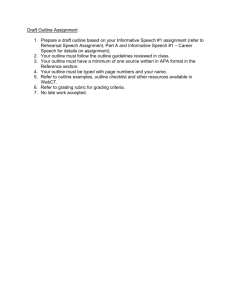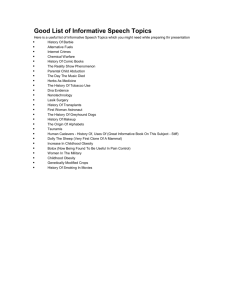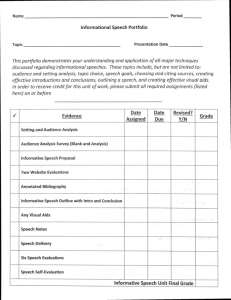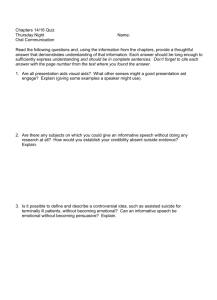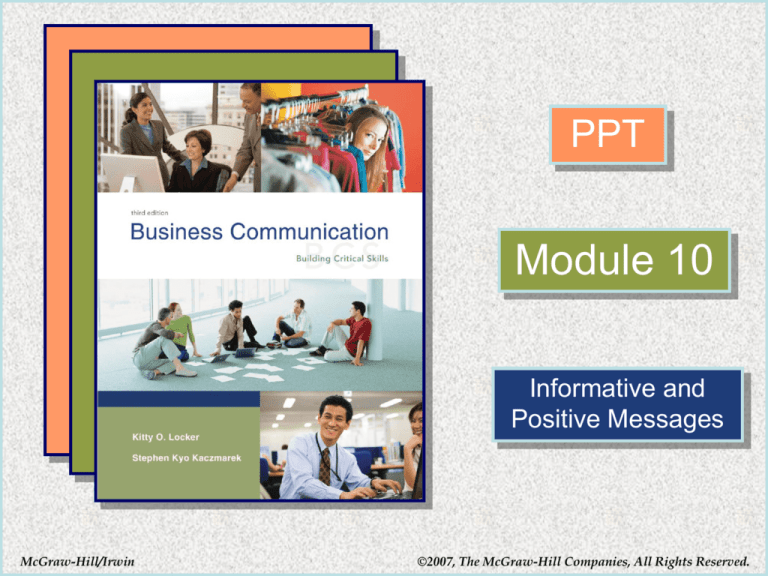
PPT
Module 10
Informative and
Positive Messages
McGraw-Hill/Irwin
©2007, The McGraw-Hill Companies, All Rights Reserved.
10-1
Informative and Positive
Messages
To learn how to
Write effective subject lines.
Organize informative and positive
messages.
Continue to develop strong reader
benefits.
10-2
Informative and Positive
Messages
To learn how to
Write goodwill endings.
Write common kinds of informative
and positive messages.
Continue to analyze business
communication situations.
10-3
Informative and Positive
Messages
Start by answering these questions:
What’s the best subject line for an
informative or positive message?
How should I organize informative
and positive messages?
When should I use reader benefits in
informative and positive messages?
10-4
Informative and Positive
Messages
Start by answering these questions:
What kinds of informative and
positive messages am I likely to
write?
How can PAIBOC help me write
informative and positive messages?
10-5
Purposes of Informative and
Positive Messages
Primary Purposes
To give information
or good news.
To have the reader
read, understand,
and view information
positively.
To deemphasize
negative elements.
10-6
Purposes of Informative and
Positive Messages
Secondary Purposes
To build a good image of the writer.
To build a good image of the writer’s
organization.
To cement a good relationship
between the writer and reader.
To reduce or eliminate future
correspondence on the same
subject.
10-7
Types of Informative and
Positive Messages
Transmittals
Confirmations
Summaries
Adjustments
Thank-You Notes
10-8
Subject Lines for Informative
and Positive Messages
Make subject lines specific.
Subject: Interview Questions for Job
Candidate Toni James.
Make subject lines concise.
Subject: Let’s Hire Toni James.
Make subject lines appropriate for the
pattern of organization.
In general, provide the same information
that you would in the first paragraph.
10-9
Informative and Positive
Messages
Follow this pattern:
Give any good news and summarize the main
points.
Give details, clarification, background.
Present any negative elements—as positively
as possible.
Explain any reader benefits.
Use a goodwill ending: positive, personal,
and forward-looking.
10-10
Use Reader Benefits
When you’re presenting policies.
When you want to shape readers’
attitudes.
When stressing benefits presents
readers’ motives positively.
When some of the benefits may
not be obvious to readers.
10-11
PAIBOC
P What are your purposes in
writing?
A Who is (are) your audiences?
I
What information must your
message include?
10-12
PAIBOC continued
B What reasons or reader
benefits can you use to support
your position?
O What objections can you
expect your reader(s) to have?
C How will the context affect
reader response?


